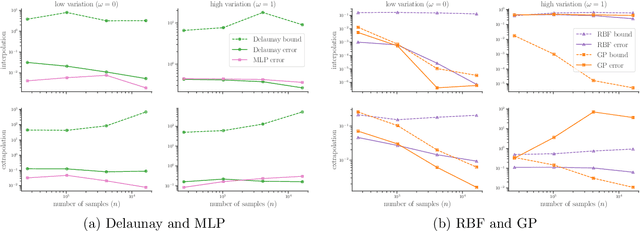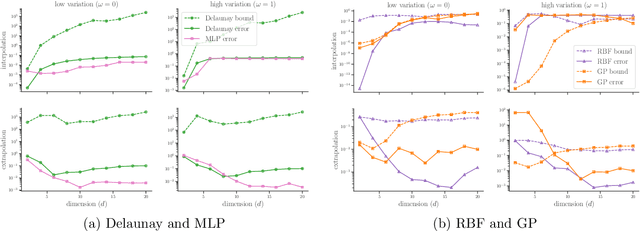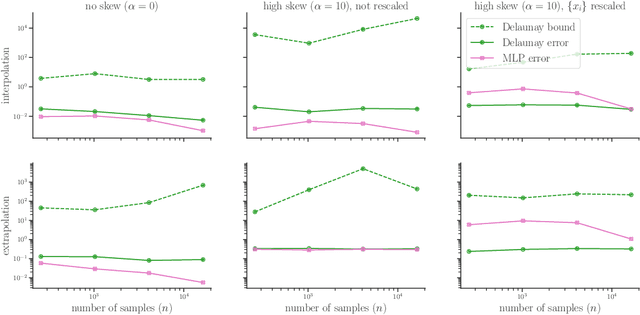Leveraging Interpolation Models and Error Bounds for Verifiable Scientific Machine Learning
Paper and Code
Apr 04, 2024



Effective verification and validation techniques for modern scientific machine learning workflows are challenging to devise. Statistical methods are abundant and easily deployed, but often rely on speculative assumptions about the data and methods involved. Error bounds for classical interpolation techniques can provide mathematically rigorous estimates of accuracy, but often are difficult or impractical to determine computationally. In this work, we present a best-of-both-worlds approach to verifiable scientific machine learning by demonstrating that (1) multiple standard interpolation techniques have informative error bounds that can be computed or estimated efficiently; (2) comparative performance among distinct interpolants can aid in validation goals; (3) deploying interpolation methods on latent spaces generated by deep learning techniques enables some interpretability for black-box models. We present a detailed case study of our approach for predicting lift-drag ratios from airfoil images. Code developed for this work is available in a public Github repository.
 Add to Chrome
Add to Chrome Add to Firefox
Add to Firefox Add to Edge
Add to Edge